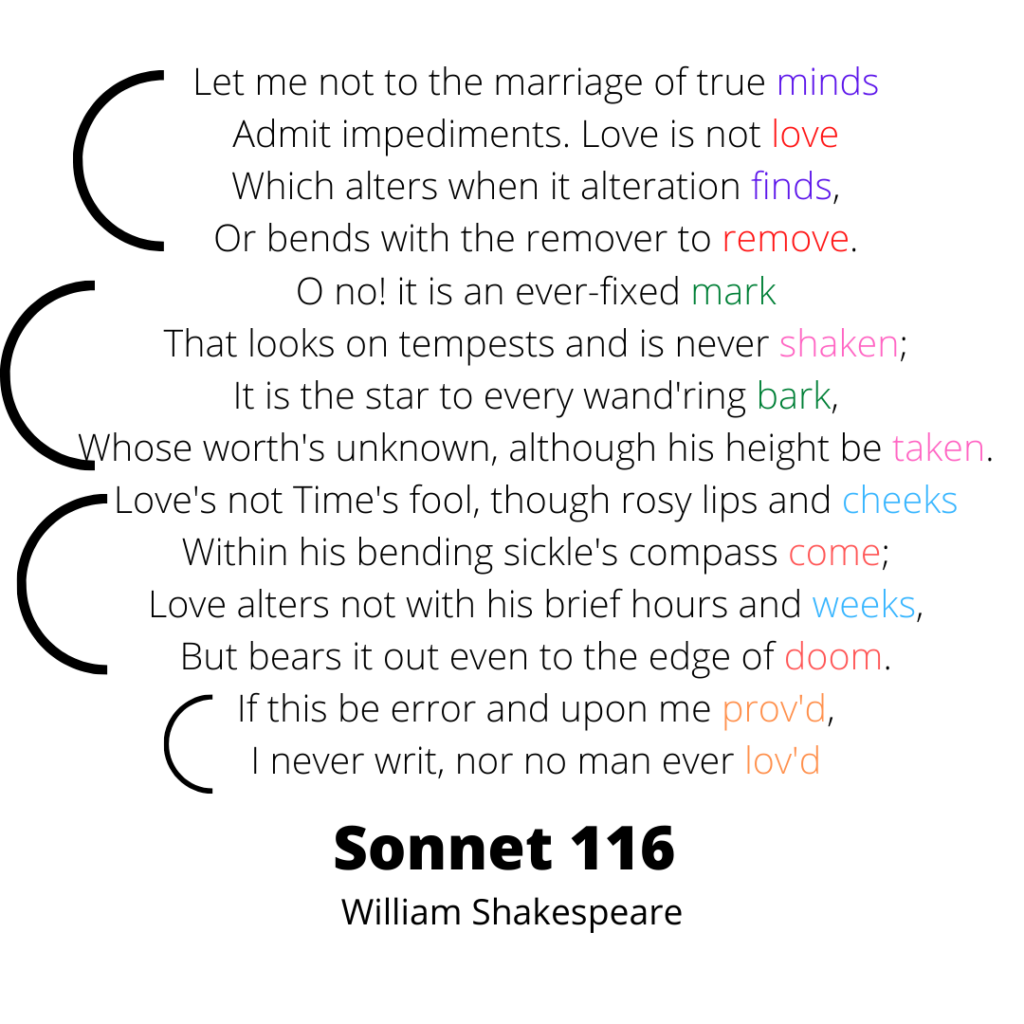

A poem of fourteen lines, - two stanzas, called the octave, being of four verses each, and two stanzas, called the sestet, of three verses each, the rhymes being adjusted by a particular rule." Shak." "He had a wonderful desire to chant a sonnet or hymn unto Apollo Pythius. The first sonnet in Sir Philip Sidney's sequence Astrophel and Stella, for example, has 12 syllables: iambic hexameter, albeit with a turned first foot in several lines.One of Shakespeare's sonnets is written in iambic tetrameter. Traditionally, English poets employ iambic pentameter when writing sonnets, but there are historical exceptions. Sonnet writers are sometimes referred to as " Sonneteers," although the term can be used derisively. The conventions associated with the sonnet have evolved over its history. In the Romance languages, the hendecasyllable and Alexandrine are the most widely used meters By the thirteenth century, it had come to signify a poem of fourteen lines that follows a strict rhyme scheme and specific structure.


The term " sonnet" derives from the Occitan word sonet and the Italian word sonetto, both meaning "little song" or "little sound". 8.3 Forms commonly associated with sonnets.Each of the quatrains briefly develops an individual idea, though each idea is closely related, and the couplet provides a commentary on previous ideas. The rhyme scheme of a Spenserian sonnet interlocks the quatrains so it has this pattern: "abab bcbc cdcd ee." Though the language of Spenserian sonnets, with words like "yet" and "but," would make it seem the turn is placed on line nine, it is typically reserved for the couplet. Similar to the Shakespearean sonnet, Spenserian sonnets consist of three quatrains and a rhyming couplet. In some cases the turn begins with the first line of the third quatrain while in others the turn does not come until the rhyming couplet at the end. Like with the Petrarchan sonnet, there are two parts to the Shakespearean sonnet but the turn, sometimes called the Volta or change in action, is not located in a set position with the Shakespearean version. The rhyme scheme of the poem is "abab cdcd efef gg" and it is written in iambic pentameter. The Shakespearean sonnet consists of three quatrains, four line stanzas, and a couplet, which is two lines. The transition between asking the question and solving the problem is called the turn this occurs at line nine. In terms of theme in Petrarchan sonnets, the first eight lines of the poem are used to present the problem or ask a question and the last six lines either solve the problem or make the point the poem was trying to make. The rhyme scheme of the sestet, the last six lines, can vary between "cde cde" and "cdc dcd." If you are not familiar with rhyme scheme, "abba" means the first line rhymes with the fourth line, and the second line rhymes with the third. The octave, the first eight lines, consists of two quatrains with "abba" rhyme scheme. In terms of structure, Petrarchan sonnets consist of two parts: an octave and a sestet. Also, sometimes iambic hexameter or iambic tetrameter is used instead of iambic pentameter. Typically this is done with a trochaic foot, which is a stressed syllable followed by an unstressed syllable, or by using a feminine rhyme to sneak in an extra syllable at the end of a line. Using iambic pentameter gives the poem a certain rhythm that makes it pleasing to hear when read aloud, but it can also become monotonous, so other types of meter are sometimes substituted. That means each of the fourteen lines in a sonnet has 10 syllables that alternate between an unstressed syllable and a stressed syllable. Most sonnets are written using iambic pentameter.


 0 kommentar(er)
0 kommentar(er)
